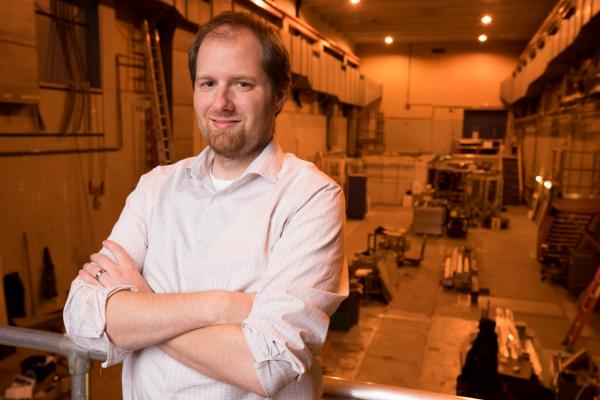
Bob Mumgaard
Bob Mumgaard
Commonwealth Fusion Systems
Friday, September 28, 2018
3:00pm
Abstract: The idea of using very high magnetic fields to create high-density plasmas dates back to the beginning of the fusion program with Bruno Coppi and MIT's Alcator team. Over the course of decades this was explored in a series of compact, high-performance devices at MIT and around the world. These machines leveraged advances in copper cryogenic magnets, novel structures, and the speed and determination of small teams and led to many fusion records and breakthroughs. This approach was soon duplicated in studies around the world and became the basis for many programs looking to take the step into net-energy and high-gain for scientific understanding. As fusion for energy was approached the two major limitations of these devices soon became apparent: 1) their large, power hungry, high stress, cryogenic copper magnets and 2) the eventual need to field large moderate-field superconducting tokamaks as power plants. The high-field machines fell out of favor. Then in the mid 2010s an un-related development changed both of these limitations--the commercialization of high-temperature superconductors (HTS). This new magnet technology promises to drastically increase the magnetic field accessible with superconducting magnets. This puts the high-field tokamak back front and center on an accelerated fusion to fusion energy not as a part of the journey but as the destination.
The seminar will trace the history of the high-field approach from its inception to its hiatus and its revival via HTS superconductors. We'll examine the various limitations of high-field copper and HTS magnets and the characteristics of high-field tokamaks as a class evolving from the invention of tokamaks to today. Then we'll look forward to explore the high-field tokamak power plants based on the ARC-concept as a class. We'll compare and contrast the attributes of these ARC-like power plants with their ITER-like or ARIES-like counterparts. What is the same? What is different? Where are the tradeoffs? We'll then use this to identify the gaps in the knowledge base for further work all based on an approach to retire risk toward fusion energy production as quickly as possible with a small team. This will then provide context to discuss SPARC, a net-energy DT tokamak explicitly designed to retire these risks as soon as possible.
Bio: Bob Mumgaard is CEO of Commonwealth Fusion Systems (CFS), a fusion energy startup company spinout of MIT. As CEO, Mumgaard drives company’s vision to accelerate the path to commercial fusion energy by managing its strategic partnerships and technical approach. A believer in the power of technical and organizational innovation to facilitate the breakthroughs needed to combat climate change, Mumgaard and the CFS team are working in collaboration with MIT’s Plasma Science and Fusion Center (PSFC) to realize the holy grail of renewable energy: fusion. As a doctoral student at MIT, Mumgaard developed techniques to measure the magnetic field inside tokamak plasmas, utilizing precise polarization techniques, robotics, and novel optical instruments on the PSFC’s Alcator C-Mod tokamak. He participated in the deployment of diagnostics on tokamaks around the world, including TCV (Switzerland), KSTAR (South Korea), and ASDEX Upgrade (Germany). During this time, he contributed to the design of several small superconducting tokamaks for a variety of physics missions using High Temperature Superconductors (HTS). After completing his PhD, he became a DOE fellow and a MIT Translational Fellow, where he studied the history, organization, and execution of large-scale projects in science and technology and focused on how entrepreneurship, risk-retirement strategies, and partnerships could speed fusion from the laboratory to the market. Mumgaard helped to organize the SPARC underground, leading the team to build the first net energy fusion device, an effort that set the groundwork for CFS. SPARC’s revolutionary new financial model allows for the use of traditional academic resources through a co-sponsored research partnership with MIT, which speeds the path to fusion energy. Bob earned his BS in mechanical engineering and physics from the University of Nebraska-Lincoln. He holds a SM in nuclear science and engineering and a PhD in applied plasma physics from MIT.